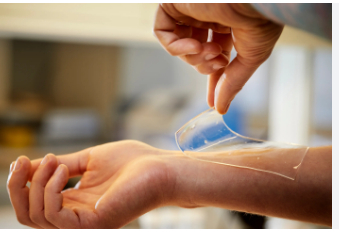
Hydrogel dressings are a popular choice in modern wound care due to their unique characteristics and benefits. They are specially created to create a moist environment that aids in the natural healing process. Here’s everything you need to know concerning hydrogel dressing.
What Are Hydrogel Dressings?
hydrogel are made from the same substance, a gel-like material that has the majority of water. This composition allows them to absorb exudate from wounds (fluid) while also maintaining an opacity within the wound. They are commonly used for treating partial and full-thickness wounds such as burns, ulcers and surgical wounds.
Benefits of Hydrogel Dressings
The retention of moisture is one the key advantages that comes with hydrogel dressings is their capacity to ensure a moist environment. This aids in the migration of cells and repair of tissues which will accelerate the healing process and decrease scarring.
The hydrogel dressings can offer a cushioning impact, which helps in reducing the discomfort and pain that comes with wound care. Gels can also be used to soothe inflamed or irritated skin.
Debridement: These dressings facilitate autolytic debridement. This is a procedure in which the body’s own enzymes break down and remove dead tissue from the wound. This aids in the preparation of the wound’s bed for healing.
Reduced Risk of Infection: By creating a barrier against the spread of infection, hydrogel dressings help to lower the chance of contracting an infection. They also reduce the need for frequent change of dressings. This can reduce the risk of infection.
When to Use Hydrogel Dressings
Hydrogel dressings are particularly useful for wounds that are dry or have low to moderate exudate. They are ideal for wounds with necrotic tissue, as they can help to dissolve dead tissue. However, they might not be suitable for heavily exuding wounds or wounds with evidence of infection because excessive moisture could cause maceration (skin loss due to excessive moisture).
Application and Care
The application of the hydrogel dressing is simple. Clean the wound with a thorough clean, then apply the hydrogel dressing and fix it using an adhesive bandage or tape if needed. Monitoring is vital to ensure that the dressing stays intact and that the wound heals correctly. In general, hydrogel dressings need to be changed every 3 to 7 days, depending on the amount of exudate and the recommendations of the manufacturer.
Conclusion
Hydrogel dressings can be a useful treatment for wounds, offering numerous benefits that aid in healing and ease. They are able to keep an environment that is moist, offer pain relief, and support natural debridement makes them an flexible choice for a variety of wounds. However, like any medical product, they should be applied in accordance with the specific requirements of the injury and under the supervision of a healthcare professional.


